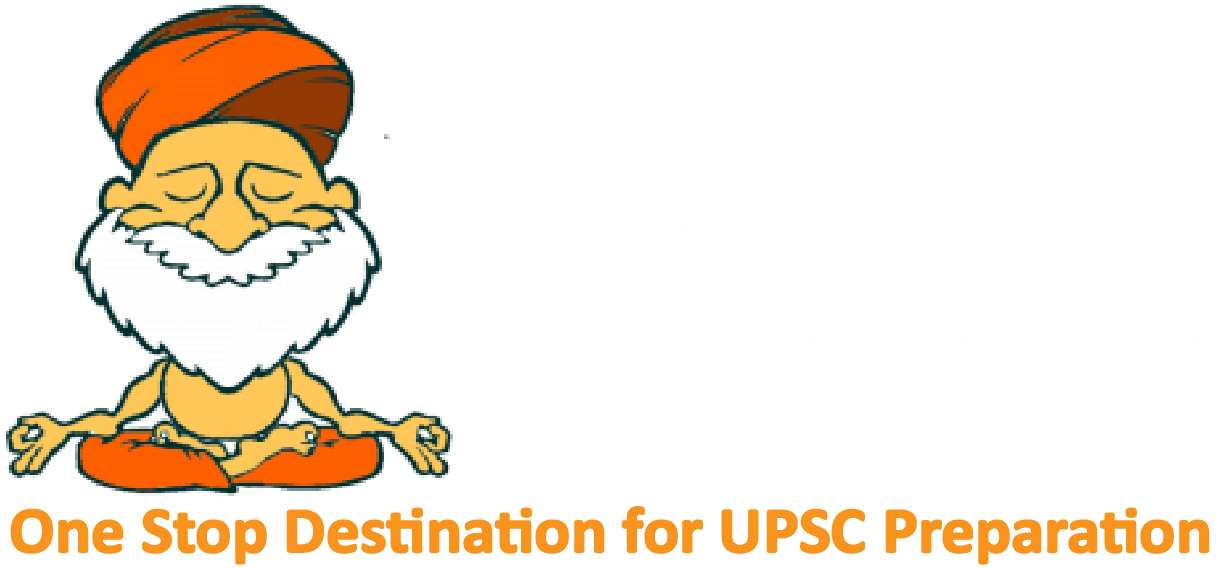- Home
- UPSC Mains
- Daily Free Initiatives
- Courses
- KPSC / KAS
- हिंदी
- Centres
- Contact Us



For Previous Daily Quiz (ARCHIVES) – CLICK HERE
The Current Affairs questions are based on sources like ‘The Hindu’, ‘Indian Express’ and ‘PIB’, which are very important sources for UPSC Prelims Exam. The questions are focused on both the concepts and facts. The topics covered here are generally different from what is being covered under ‘Daily Current Affairs/Daily News Analysis (DNA) and Daily Static Quiz’ to avoid duplication. The questions would be published from Monday to Saturday before 2 PM. One should not spend more than 10 minutes on this initiative.
Gear up and Make the Best Use of this initiative.
Do remember that, “the difference between Ordinary and EXTRA-Ordinary is PRACTICE!!”
0 of 5 questions completed
Questions:
To view Solutions, follow these instructions:
You have already completed the test before. Hence you can not start it again.
Test is loading...
You must sign in or sign up to start the test.
You have to finish following test, to start this test:
0 of 5 questions answered correctly
Your time:
Time has elapsed
You have scored 0 points out of 0 points, (0)
| Average score |
|
| Your score |
|
| Pos. | Name | Entered on | Points | Result |
|---|---|---|---|---|
| Table is loading | ||||
| No data available | ||||
Consider the following statements regarding Spotlight Initiative:
Which of the above statements is/are correct?
Solution (c)
The Spotlight Initiative is a global, multi-year partnership between the European Union and the United Nations to eliminate all forms of violence against women and girls by 2030.
The Spotlight Initiative responds to all forms of violence against women and girls, with a particular focus on domestic and family violence, sexual and gender-based violence and harmful practices, femicide, trafficking in human beings and sexual and economic (labour) exploitation.
The campaign is designed to promote the elimination of violence against women and girls, while bringing visibility to the Spotlight Initiative and its partners, including UN agencies receiving funds from the Initiative (ILO, IOM, OHCHR, UN Women, UNDP, UNESCO, UNFPA, UNHCR, UNICEF, UNOCD, UNTF, WHO).
According to UN, violence against women and girls is one of the most widespread, persistent and devastating human rights violations in our world today.
Article Link: 46% rise in complaints of crimes against women in 2021 so far: NCW
Solution (c)
The Spotlight Initiative is a global, multi-year partnership between the European Union and the United Nations to eliminate all forms of violence against women and girls by 2030.
The Spotlight Initiative responds to all forms of violence against women and girls, with a particular focus on domestic and family violence, sexual and gender-based violence and harmful practices, femicide, trafficking in human beings and sexual and economic (labour) exploitation.
The campaign is designed to promote the elimination of violence against women and girls, while bringing visibility to the Spotlight Initiative and its partners, including UN agencies receiving funds from the Initiative (ILO, IOM, OHCHR, UN Women, UNDP, UNESCO, UNFPA, UNHCR, UNICEF, UNOCD, UNTF, WHO).
According to UN, violence against women and girls is one of the most widespread, persistent and devastating human rights violations in our world today.
Article Link: 46% rise in complaints of crimes against women in 2021 so far: NCW
Consider the following statements regarding PRANA portal, launched recently:
Which of the above statements is/are correct?
Solution (b)
PRANA portal is launched by the Ministry of Environment, Forest and Climate Change.
PRANA or the Portal for Regulation of Air-pollution in Non-Attainment cities under the National Clean Air Programme (NCAP) would support tracking of the physical and financial status of city air action plan implementation. It would also disseminate information on air quality to the public while also providing comprehensive information related to NCAP programme details, progress, city action plans, implementation updates by city/state/ national level agencies, air quality data, and trends, etc.
The portal (prana.cpcb.gov.in) has a national dashboard that has interactive points on 7 thematic areas of city air action plans, PM10 performance, ambient air monitoring network, public grievance redressal portal, graded response action plans, and more. It is intertwined with the Government’s goal for sustainable utilization, protection, and conservation of public goods and the environment.
Article Link: PRANA portal launched to regulate air pollution in 132 cities
Solution (b)
PRANA portal is launched by the Ministry of Environment, Forest and Climate Change.
PRANA or the Portal for Regulation of Air-pollution in Non-Attainment cities under the National Clean Air Programme (NCAP) would support tracking of the physical and financial status of city air action plan implementation. It would also disseminate information on air quality to the public while also providing comprehensive information related to NCAP programme details, progress, city action plans, implementation updates by city/state/ national level agencies, air quality data, and trends, etc.
The portal (prana.cpcb.gov.in) has a national dashboard that has interactive points on 7 thematic areas of city air action plans, PM10 performance, ambient air monitoring network, public grievance redressal portal, graded response action plans, and more. It is intertwined with the Government’s goal for sustainable utilization, protection, and conservation of public goods and the environment.
Article Link: PRANA portal launched to regulate air pollution in 132 cities
With reference to Methanol Economy’ Programme, consider the following statements:
Which of the above statement sis/are correct?
Solution (d)
Methanol is a low carbon, hydrogen carrier fuel produced from high ash coal, agricultural residue, CO2 from thermal power plants and natural gas. It is the best pathway for meeting India’s commitment to COP 21.
The United Nations Climate Change Conference (COP 21) was held in Paris in 2015. The COP 21 led to a new international climate agreement, applicable to all countries, aiming to keep global warming at 1.5°C – 2°C, in accordance with the recommendations of the Intergovernmental Panel on Climate Change (IPCC).
Methanol Economy program initiated by NITI Aayog is aimed at reducing our oil import bill; reducing greenhouse gas (GHG) emissions & converting Indian coal reserves and municipal solid waste into methanol leading to independence from import while creating new jobs by setting up Methanol Production Plants.
Methanol, although slightly lower in energy content than petrol and diesel, can replace both petrol and diesel in transport sector (road, rail and marine), energy sector (comprising of DG sets, boilers, process heating modules, tractors and commercial vehicles) and retail cooking replacing LPG (partially), Kerosene and wood charcoal.
Blending of 15% methanol in gasoline can result in at least 15% reduction in import of gasoline/ crude. In addition, it would bring down GHG emissions by 20% in terms of particulate matter, NOx, and Sox thereby improving urban air quality.
Solution (d)
Methanol is a low carbon, hydrogen carrier fuel produced from high ash coal, agricultural residue, CO2 from thermal power plants and natural gas. It is the best pathway for meeting India’s commitment to COP 21.
The United Nations Climate Change Conference (COP 21) was held in Paris in 2015. The COP 21 led to a new international climate agreement, applicable to all countries, aiming to keep global warming at 1.5°C – 2°C, in accordance with the recommendations of the Intergovernmental Panel on Climate Change (IPCC).
Methanol Economy program initiated by NITI Aayog is aimed at reducing our oil import bill; reducing greenhouse gas (GHG) emissions & converting Indian coal reserves and municipal solid waste into methanol leading to independence from import while creating new jobs by setting up Methanol Production Plants.
Methanol, although slightly lower in energy content than petrol and diesel, can replace both petrol and diesel in transport sector (road, rail and marine), energy sector (comprising of DG sets, boilers, process heating modules, tractors and commercial vehicles) and retail cooking replacing LPG (partially), Kerosene and wood charcoal.
Blending of 15% methanol in gasoline can result in at least 15% reduction in import of gasoline/ crude. In addition, it would bring down GHG emissions by 20% in terms of particulate matter, NOx, and Sox thereby improving urban air quality.
Democracy Index is published annually by:
Solution (a)
The Democracy Index (began in 2006) is prepared by the Economist Intelligence Unit. It provides a snapshot of the state of democracy worldwide in 165 independent states and two territories.
The Index is based on five categories:
The countries are scored on a scale of 0 to 10 on 60 indicators within the above categories.
Based on their scores, each country is classified as one of four types of regimes:
Full democracy (scores greater than 8);
Article Link: EIU declined India’s offer to use govt data for Democracy Index
Solution (a)
The Democracy Index (began in 2006) is prepared by the Economist Intelligence Unit. It provides a snapshot of the state of democracy worldwide in 165 independent states and two territories.
The Index is based on five categories:
The countries are scored on a scale of 0 to 10 on 60 indicators within the above categories.
Based on their scores, each country is classified as one of four types of regimes:
Full democracy (scores greater than 8);
Article Link: EIU declined India’s offer to use govt data for Democracy Index
Biofuels made from algal biomass are known as:
Solution (c)
Biofuels are liquid or gaseous fuels primarily produced from biomass, and can be used to replace or can be used in addition to diesel, petrol or other fossil fuels for transport, stationary, portable and other applications. Crops used to make biofuels are generally either high in sugar (such as sugarcane, sugarbeet, and sweet sorghum), starch (such as maize and tapioca) or oils (such as soybean, rapeseed, coconut, sunflower).
Biofuels produced from the algae are known as third generation biofuels. These are also known as also known as “algae fuel” or “oilage”. Algae leads to the production of all types of bio-fuels such as biodiseal, gasoline, butanol, propanol and ethanol with high yield, approximately 10 times higher than the second generation biofuel. Cultivation of third generation biofuel biomass also assists in maintaining environmental balance by consuming the CO2 present in the atmosphere.
Article Link: Emerging opportunities in biofuel sector
Solution (c)
Biofuels are liquid or gaseous fuels primarily produced from biomass, and can be used to replace or can be used in addition to diesel, petrol or other fossil fuels for transport, stationary, portable and other applications. Crops used to make biofuels are generally either high in sugar (such as sugarcane, sugarbeet, and sweet sorghum), starch (such as maize and tapioca) or oils (such as soybean, rapeseed, coconut, sunflower).
Biofuels produced from the algae are known as third generation biofuels. These are also known as also known as “algae fuel” or “oilage”. Algae leads to the production of all types of bio-fuels such as biodiseal, gasoline, butanol, propanol and ethanol with high yield, approximately 10 times higher than the second generation biofuel. Cultivation of third generation biofuel biomass also assists in maintaining environmental balance by consuming the CO2 present in the atmosphere.
Article Link: Emerging opportunities in biofuel sector
